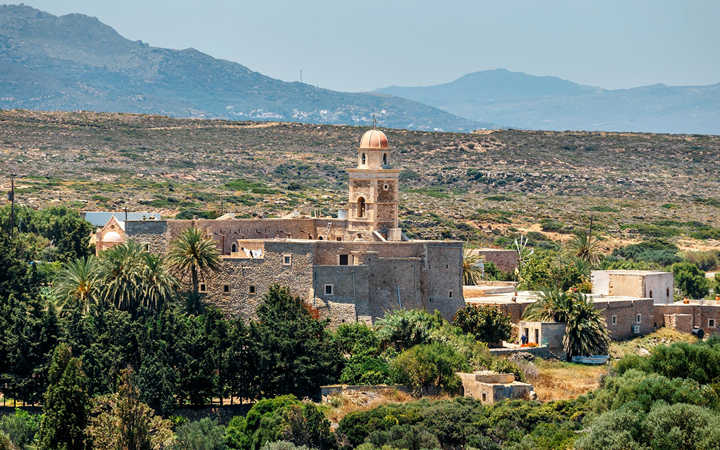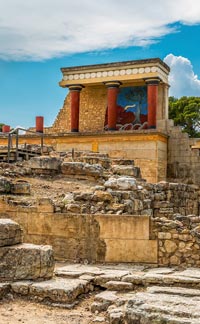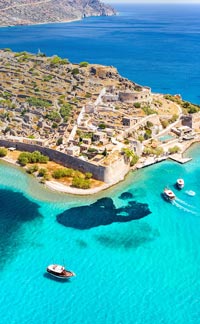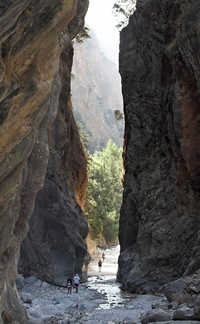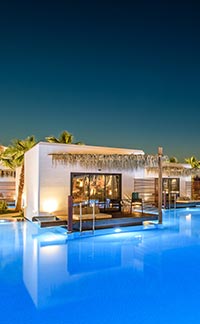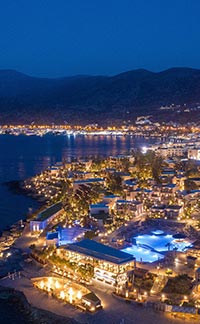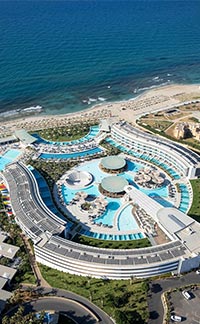This monastery, one of Crete's most important, was founded in the 15th century in the semi-desert of extreme northeast Crete, about 15 km southwest of Cape Sidero, Crete's extreme northeasterly point. Dedicated to the Panagia, or Virgin Mary, it's also known as the Monastery of Panagia Akrotiriani (Virgin of the Cape). The monastery is also dedicated to St. John the Theologian (the Apostle John). The nearest large city is Agios Nikolaos, 85 km to the west. Closer in are the resort towns of Sitia, about 18 km west, and Vai, about 7 km northeast. The name "Toplou" comes from the Turkish for "cannonball." The Turks recognized the site for its strategic location on a plain along a major east-west arterial road.
It was founded around 1450 on the site of an older convent. The Knights of Malta, who were Catholic, plundered the Orthodox monastery in 1530. An earthquake leveled it in 1612. It was rebuilt, then abandoned when the Turks took over Crete from the Venetians in 1646. The monastery was revived in 1704. In 1821, the first year of the Greek Revolution against the Ottoman Turks, the Turks massacred its residents. In 1828 it was re-populated, but in 1866, during the Cretan Uprising, the Turks once again destroyed the monastery. During the German Occupation, the abbot and two of the monks of the monastery were tortured and executed when the Nazis discovered that the monastery was giving refuge to Cretan Resistance fighters, and had allowed a wireless station to be set up in a small cave about 500 meters away. Suffice it to say, Toplou has seen its share of troubles.
Toplou is built like a fortress, which served it well in its defense against pirates and numerous invaders. The thick walls are 10 meters high. The 33 meter-high bell tower, which rises out of the surrounding plains like a watch tower, was built in the late 1500's. There were several other monasteries in the area, but Toplou is the only surviving one.
It houses an excellent collection of 15th century icons by well-known iconographers such as Ioannis Kornaros, whose work dates from the late 1700's. The monastery does double duty as a museum, displaying Mt. Athos-originated copper engravings from the 1700's-1800's, old copies of the Gospels, decorative crosses, Sultan's decrees, vestments, seals, and banners.
The monastery welcomes overnight visitors. It is served by just 4 monks who live on site, but its abbot, Philotheos Spanoudakis, has been promoting its charms tirelessly. He established the copper engravings museum, and supervises the cultivation of grapes and olives on its extensive land holdings. It produces its own organic wine, raki, and olive oil.
They monastery's land holdings are so extensive, in fact, that little development has taken place in this eastern part of Crete because the monastery controls so much of it. For visitors, there is a nice cafe just outside the museum serving raki and wine, yogurt and honey, and bread and olives, all locally produced.

